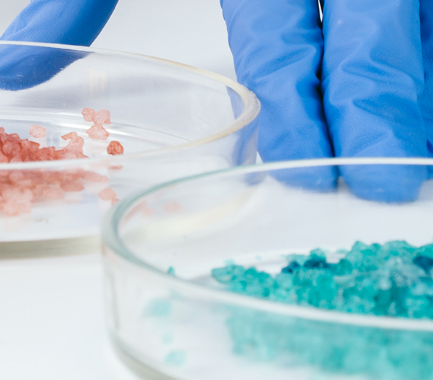Your contact
PENPET-Team - Hamburg

Tim Meister
Sales
Tel. +49 (0) 40 - 675 7 99 40
sales@penpet.de
Get in touch with us.
Di-pentaerythritol (di-penta)
Di-pentaerythritol (di-penta) is an organic compound from the group of multiple alcohols, which is of great importance for the chemical industry as a starting material for the production of lacquers, paints and coatings. In large-scale processes, the substance, like the simpler pentaerythritol, is produced from the compounds acetaldehyde and formaldehyde in the presence of sodium hydroxide.
At PENPET you get di-pentaerythritol (di-penta) of the highest quality - from a reliable partner who will also meet your requirements in the long term. We look forward to receiving your inquiry for an individual offer. The solid can be delivered punctually as a crystalline powder in sacks or Big Bags with different weights.
CAS no. 126-58-9
EINECS no. 204-794-1
Molecular formula: C10H22O7
Synonyms: Dipentaerythritol, Di-Penta,2,2,2′,2′,-Tetrakis(hydroxymethyl)-3,3′-oxydipropan-1-ol, Dipentaerythritol, DPE
Areas of application: Base material for the production of lacquers, lacquer binders, paints, coatings and alkyd resins
More Information
Although di-pentaerythritol (di-penta) is produced from formaldehyde and acetaldehyde, it is - according to its name - structurally the ether of two molecules of the substance pentaerythritol. Thus, the symmetrical compound consists of two pentaerythritol residues, each constructed as a star structure of five carbon atoms with hydroxy groups on all terminal carbon atoms. In the center of the substance is an ether group, which connects the two molecular components.
In total, the multi-branched di-pentaerythritol has seven functional groups, whereby the six terminal hydroxy groups determine the reaction behavior of the compound. The hexavalent alcohol can react with carboxylic acids to form an ester. The multiple esterification of the substance with fatty acids is used to produce alkyd resins.
Under normal conditions, di-pentaerythritol (di-penta) is a solid in the form of fine, crystalline scales. The compound is colorless to white in appearance and has no intrinsic odor. Dipentaerythritol melts when heated to 215°C. Before the compound reaches the gaseous state, thermal decomposition occurs at 373 °C. The substance is only very poorly soluble in many common solvents such as water, ethanol, methanol, benzene and acetone. With a pH of 5.0, dipentaerythritol is slightly acidic.
When handled and stored as intended, di-pentaerythritol (di-penta) is a chemically stable solid. The crystalline compound is not hygroscopic and is therefore resistant to moisture. Dangerous reactions are not to be feared. However, avoid contact with strong oxidizing agents.
Dipentaerythritol is a flammable compound, but it is difficult to ignite. However, the turbulence of fine powder particles can result in highly flammable and explosive dust-air mixtures. When processing open containers of the substance, a sufficient distance from possible sources of ignition such as open flames, sparks or hot surfaces must therefore be ensured. The combustion and thermal decomposition of the substance produce irritating and harmful gases. Large amounts of carbon monoxide and carbon dioxide can be released, among other things.
According to the GHS classification, di-pentaerythritol (di-penta) is not a hazardous substance. However, direct contact of the compound with the skin or eyes may cause slight irritation and redness. Affected parts of the body should be rinsed thoroughly with water. If symptoms persist, a medical examination must be arranged.
Due to possible damage to aquatic organisms, dipentaerythritol is considered to be slightly hazardous to water and must not be allowed to get into ground water, waste water or bodies of water. If large quantities of the substance escape into the environment, this must be reported to the responsible authorities. Dipentaerythritol is not subject to any special transport regulations.
